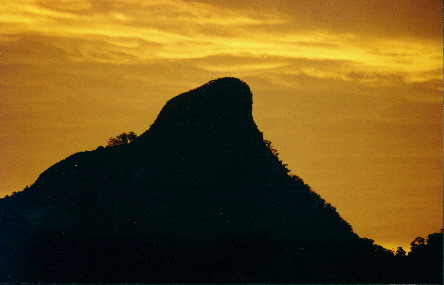
According to some ecologists, rainforests can be defined into four subformations. These include subtropical, dry, warm temperate, and cool temperate. These subformations can be defined according to the climate, soil, structure, leaf characteristics and special life forms.

Subtropical rainforests are the most developed subformation in NSW. They occupy warm, fertile sites with high rainfall in excess of 1300 mm annually. It is a tall forest (30 - 45 m in height), and consists of two or three strata of trees forming an uneven canopy. Most of the plant species have compound leaves with entire leaves or leaflets more than 7.5 cm long.
Stranglers, palms, plank buttressing, large epiphytes and woody vines are characteristic features. The ground layer consists of large-leafed herbs and ferns. Littoral rainforest is derived mainly from this subformation but also includes some representatives from the dry rainforest subformation. A common feature is the ability to withstand high levels of airborne salt, so they are commonly situated along the coastlines.

